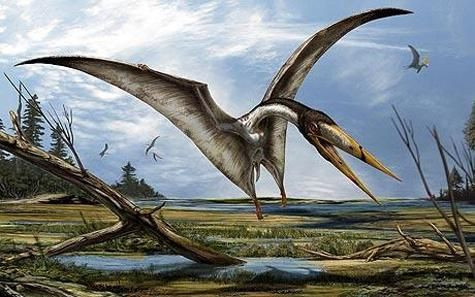Fossil Shark Inside Drawer Turns Out To Be Mysterious Flying Reptile Remains
KEY POINTS
- Fossils of shark spines in a U.K. museum turned out to be jaws of a toothless reptile species
- Two of the specimens discovered can be identified as a pterosaur called Ornithostoma
- One additional specimen is clearly distinct and represents a new species
For decades, 100-year-old fossils, of what was thought to be shark fins, had been lying inside one of the drawers in the Booth Museum of Natural History in Brighton, England. Plying among these fossils one day, a student made the astounding discovery that the bones belong to a species of prehistoric flying reptiles.
The bones were extremely disjointed that naming the species became impossible for University of Portsmouth Ph.D. student Roy Smith. Nevertheless, Smith and his team categorized it under a type of Pterosaurs known to have existed in North Africa. The fact that the fossils were discovered in the U.K. made it an “extremely exciting” time for Smith and his team.
Smith said that he was examining fossils of shark spines that were abundant in England between 1851 and 1900. Miners used to sell these fossils for extra money hence the bones kept piling up in museums.
The ones he discovered to be that of Pterosaurs were actually fragments of jaws of the toothless reptile species. These bones resembled shark fin spines, but he saw the difference.
"One such feature are tiny little holes where nerves come to the surface and are used for sensitive feeding by the pterosaurs. Shark fin spines do not have these, but the early paleontologists clearly missed these features,” Smith said in a press release.
“Two of the specimens discovered can be identified as a pterosaur called Ornithostoma, but one additional specimen is clearly distinct and represents a new species. It is a palaeontological mystery,” he said.
Professor Dave Martill, Smith’s professor at the university, said that it was the smaller beak of the additional specimen that distinguished the new species from the Ornithostoma. He compared the difference to that of the great white egret and heron. If the creatures were alive, they would have differences in color and behavior.
The findings of their study are published in The Proceedings of the Geologists Association.
The challenge for the team is how to plan their next actions to name the new specimen. Smith said there might be no more remains of the mysterious pterosaur out there. The only hope they have now is that other museums have the same fossils stashed somewhere in their drawers.

© Copyright IBTimes 2025. All rights reserved.





















